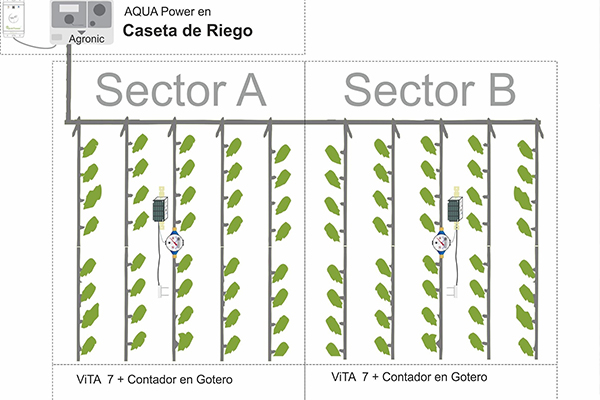Savings of 35% of irrigation water were achieved
during the trial period
Acrena is a Cooperative born in 1982, producer and marketer of cucumbers, peppers, varieties of tomatoes, eggplants, melons and watermelons. There are 350 members who market their products through this SAT. They distribute 40% in the national market and 60% in the European Community.
Industry: Fruit and vegetables








